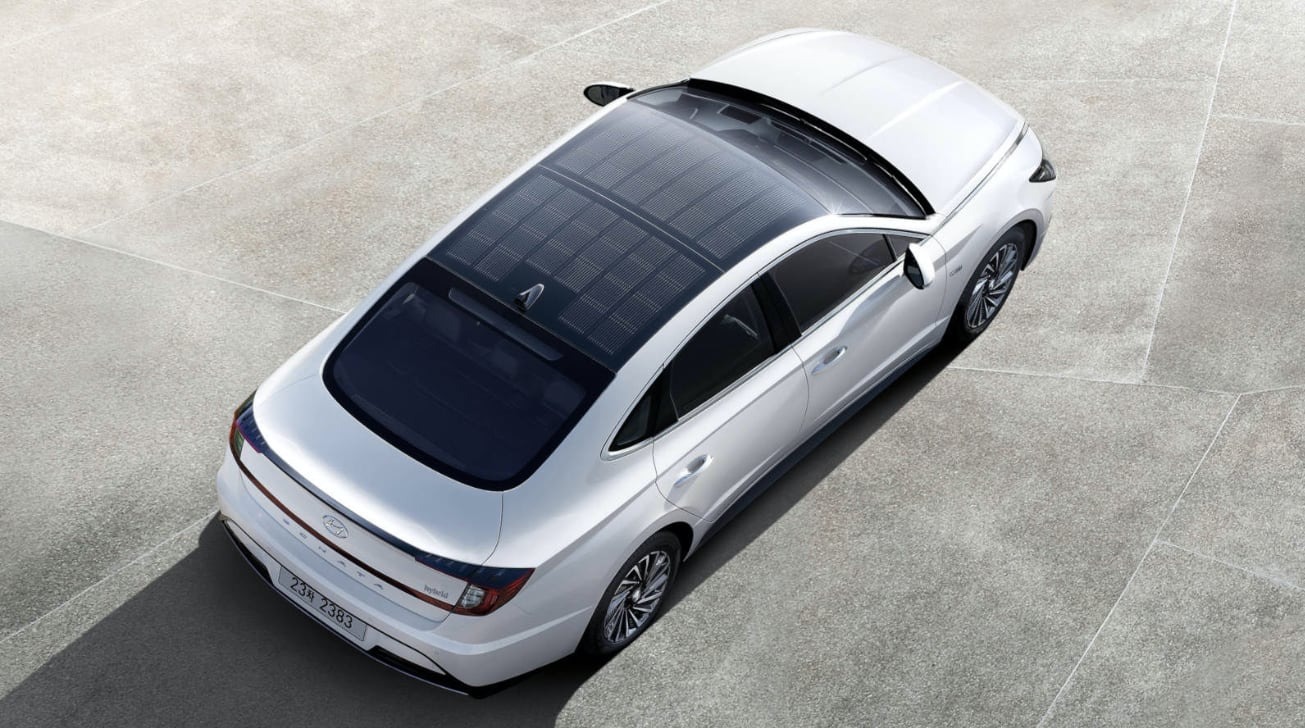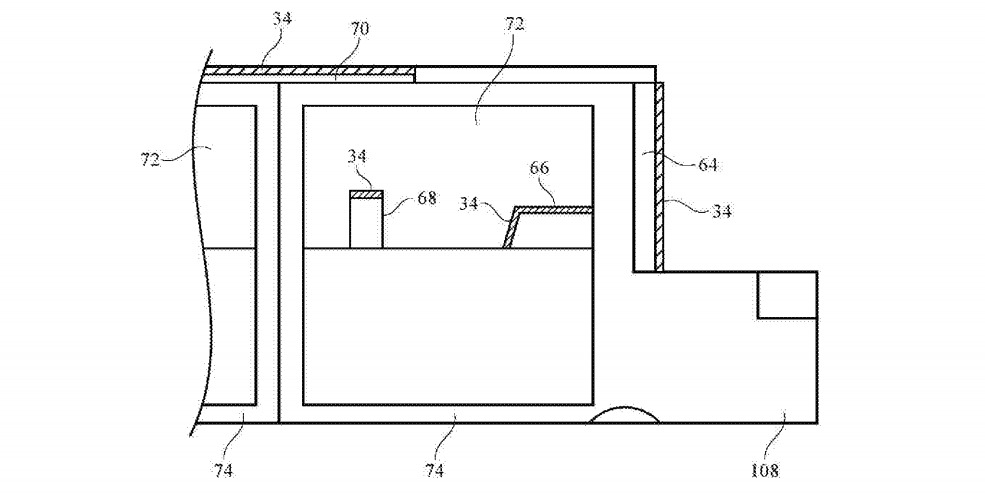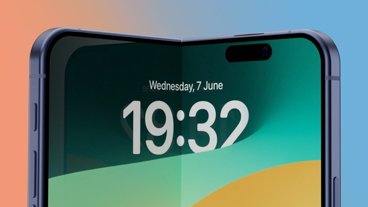Apple's future car may have photovoltaic solar panels on the roof to maximize range and idle charging speed, but it may not stop there. The company believes that an extension of the technology would be well-suited to the Apple Watch, the iPhone, and other device cases.
A problem that the vast majority of portable electrical devices have is a need to recharge the batteries. Users, from time to time, have to undergo the chore of plugging their iPhone into a wall outlet, or placing it on a wireless charging pad to regain power.
In the case of an electric car, such as the rumored Apple car, drivers have to go to a specific charging station on a long road trip and wait for long periods to acquire more charge. Even at a destination, there is no guarantee that charging facilities will be available, leaving the prospect of an electric car being parked up without any ability to top up its electrical fuel reserves.
In a patent granted to Apple by the U.S. Patent and Trademark Office on Tuesday titled "Systems with photovoltaic cells," Apple simply suggests applying solar panels to products that need recharging, to allow a gradual trickle recharge of power over time.
In general, Apple proposes the use of a material made from intertwined stands, with some of the strands made up of conductive strands. The conductive elements connect a recharging system of a device to a photovoltaic cell, mounted onto the material.
To ensure optimal power flow, the conductive strands have to be separated by insulating strands, eliminating any contact between conductive elements throughout the fabric.
While the photovoltaic cell could be a fixed element, Apple also proposes the use of a thin-film photovoltaic cell deposited onto the flexible material, allowing the 1 to 10 microns-thick film to confirm to the shape of a casing. The material in question can include fabrics, polymers, and leathers, the patent suggests.
Apple also believes that the solar panel flexible material could be incorporated into headphones or a cover for an electronic device. Other items that may benefit from the system mentioned in the filing include a "wristwatch device" like an Apple Watch, a "device embedded in eyeglasses or other equipment worn on a user's head," and "in an automobile."
Drawings included in the patent directly depict the use of photovoltaic panels on headphones and a vehicle. In the latter case, the use of such panels would be beneficial as it would be expected a car would be outdoors and exposed to the sun for long stretches of time, and would provide an opportunity to recharge whenever it is in use or parked externally.
Adding solar panels to a car roof is not a new concept, with some manufacturers already offering them on vehicles. In Apple's version, the film would plausibly be placed all over a vehicle, and as depicted in one image, even covering a window, suggesting it may be transparent or sufficiently translucent enough for that purpose.
The patent lists its inventors as Joseph B. Walker, Kathleen A. Bergeron, and Daniel D. Sunshine. Bergeron has been previously linked to a haptic feedback system for the Apple Pencil, while Sunshine is named in filings relating to smart Apple Watch straps and adjustable smart fabric.
Apple files numerous patent applications on a weekly basis, but while the existence of a filing indicates areas of interest for Apple's research and development teams, it does not guarantee the concepts described will appear in a future product or service.
The Apple Car has been long rumored to be under development, under the title "Project Titan" alongside Apple's self-driving vehicle testing. Though autonomous driving has taken the most attention, many filings have surfaced revealing Apple has ambitions to redesign the automobile in a number of surprising ways.
These include sunroof designs using a large glass panel and a multi-segmented iteration, headlight systems that could highlight road hazards, in-car illumination systems that use TrueTone technology, and smart seatbelts among others. On power, Apple has suggested the idea of peloton of cars that could share energy between vehicles, wireless charging systems, battery floors, and even a small robot that plugs a charging cable underneath a vehicle.
Apple's suggested use of conductive strands have also floated around for a while in patent filings, including one from January 2019 explaining how the strands could be woven to create contact points to more seamlessly embed sensors and components into clothing and fabric-based accessories.
 Malcolm Owen
Malcolm Owen









-m.jpg)






 Charles Martin
Charles Martin
 Christine McKee
Christine McKee
 Wesley Hilliard
Wesley Hilliard

 Andrew Orr
Andrew Orr
 William Gallagher
William Gallagher
 Sponsored Content
Sponsored Content








18 Comments
Apple is spending $20 billion a year in R&D with little coming out of the pipeline. Exhibit A is the “Apple Car”
There are now thousands of employees at Apple whose “job” is to generate patents. Just like at IBM
Are photovoltaic cells getting much better at capturing energy? Because this has been possible since forever, but the amount of charge they generate is so small compared to the amount needed by these devices that it's pretty pointless. Maybe a car with a large expanse of roof that's always angled upwards makes sense, but for personal devices that spend much or most of the time in pockets or inside or lying on a table not necessarily angled towartds the sun, it seems at best half baked.